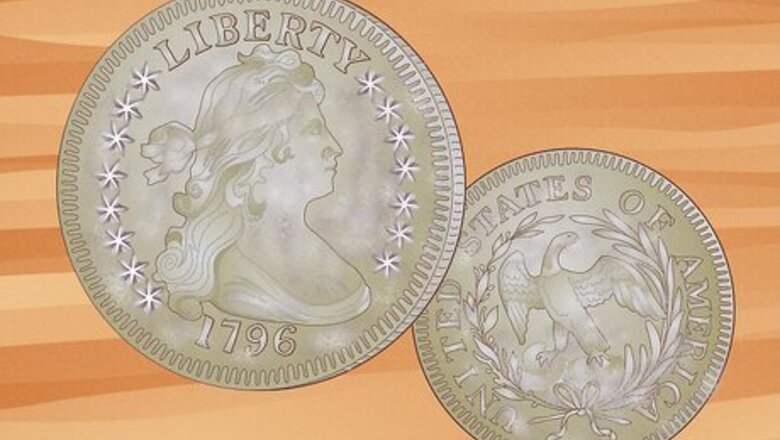
views
The 20 Rarest & Most Valuable Quarters
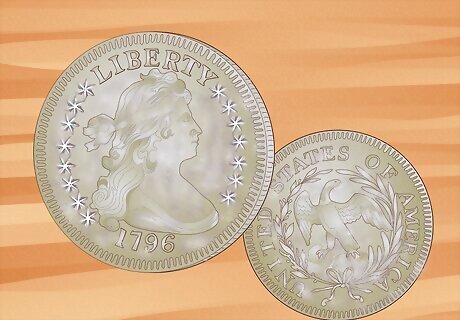
1796 Draped Bust Quarter This was the first quarter ever minted by the United States Mint. The 1796 Draped Bust quarter is extremely rare and a prize collectible for its scarcity and historical impact. The obverse side (heads) of this coin features Liberty facing right, while the reverse (tails) showcases an eagle perched on a cloud. How to identify: Look for Liberty on the obverse with 1796 under her bust and an eagle on the reverse. Price: Up to $100,000 Currently in circulation? No. A quarter’s mint indicates where the coin was pressed or created. “W” stands for the West Point mint facility, “D” for Denver, “P” for Philadelphia, and “S” for San Francisco.
1823/2 Capped Bust Quarter This rare coin features two sets of dates. On this quarter, the year 1823 was struck over 1822 due to an error in production and reusing old dies. Only a handful of these quarters exist in high grade. How to identify: Look for a faint “2” etched behind the “3” of “1823.” Price: Up to $350,000 Currently in circulation? No.
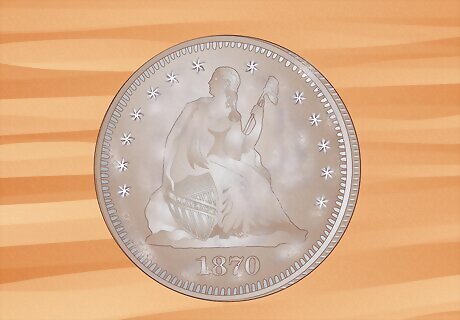
1870-CC Seated Liberty Quarter This historical quarter was minted in Carson City, a now non-existent mint facility. Only 8,340 of these coins were minted, making it incredibly rare and valuable. How to identify: Look for a solid silver edge without a copper stripe on a 1870 quarter with an image of seated Liberty. Price: Up to $325,000 Currently in circulation? No.
1804 Draped Bust Quarter The 1804 Draped Bust quarter had a very limited production, making it incredibly rare. It was also one of the first coins to be minted by the US, giving it a great historical significance. Only 6,738 of these coins were created. How to identify: Look for 13 stars, 7 on the left and 6 to the right of Liberty’s bust, on the obverse side of the coin. Price: Up to $300,000 Currently in circulation? No.

1916 Standing Liberty Quarter 1916 was the first year of the Standing Liberty coin series. Only about 52,000 of these coins were minted, as the original 1916 design was quickly altered for later years. How to identify: Bare-breasted Liberty on the obverse side without chain-mail. Price: Up to $70,000 Currently in circulation? No.
1927-S Standing Liberty Quarter This 1927 quarter has the same design as its 1916 counterpart: a bare-breasted Liberty on the reverse side and an olive branch on the obverse. However, this coin comes from the San Francisco Mint, as indicated by the “S.” Only 396,000 of these coins were made, making the 1927 Standing Liberty Quarter one of the rarest in the United States. How to identify: Look for the “S” mintmark stamped next to Liberty’s feet. Price: Up to $60,000 Currently in circulation? No.
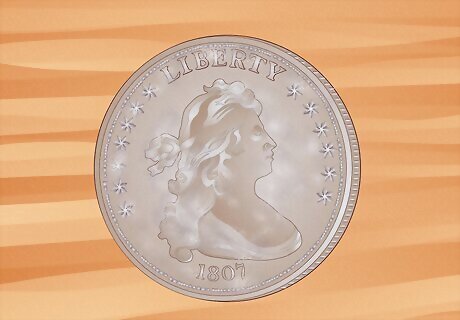
1807 Draped Bust Quarter 1807 was the final year of the Draped Bust design. With low production numbers and few surviving samples, this quarter is one of the rarest for collectibles to find. How to identify: Look for Liberty on the obverse with 13 stars surrounding her and 1807 under her bust. Price: Up to $750,000 Currently in circulation? No.
1896-S Barber Quarter Named after its designer, Charles D. Barber (the sixth Chief Engraver of the US Mint), this quarter features Liberty’s head on the obverse and an eagle on the reverse. Only around 188,000 of these coins were minted, making it one of the most valuable coins of that era. How to identify: Look for the mintmark “S” above the space between the “R” of “QUARTER” and the “D” of “DOLLAR.” Price: Up to $135,000 Currently in circulation? No.
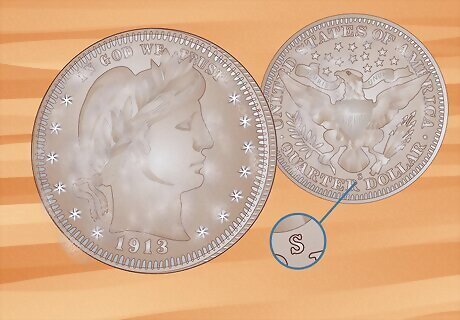
1913-S Barber Quarter Coming after its 1896 counterpart, this quarter features the same design. This coin only had a mintage of 40,000, making it one of the rarest Barber quarters. How to identify: Look for the mintmark “S” above the space between the “R” of “QUARTER” and the “D” of “DOLLAR” of a 1913 coin. Price: Up to $185,000 Currently in circulation? No.
1999-S Delaware Quarter, Proof Only This quarter was never intended for circulation, making it a high-value item amongst collectors. Only 1.3 million 1999-S Delaware Proof Only quarters were minted, making them much rarer than the versions currently circulating.Proof coins are used to test the Mint or pressing process of a new coin and aren’t intended for circulation. How to identify: Notice if the coin has a highly reflective or mirror-like surface. Price: Up to $100 Currently in circulation? No. Fun fact: Proof coins can often be bought in sets from the United States Mint.
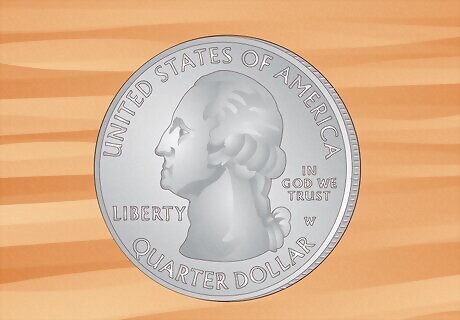
2019-W Washington Quarter In 2019, the United States Mint took a new printing approach to quarters. Rather than a new Washington quarter design being made to order, 2 million quarters were struck at the West Point mint facility with 5 different designs. The new quarters were mixed in circulation with coins from other facilities until 2020. How to identify: Look for a “W” marked on the face side of a 2019 Washington quarter. Price: Up to $375 Currently in circulation? Yes.
1932-D Washington Quarter Only around 436,800 quarters of this mintage were struck in Denver in 1932. This quarter is incredibly rare because of its low production. How to identify: Look for a “D” on the reverse of a 1932 quarter. Price: Up to $26,000 Currently in circulation? Yes.
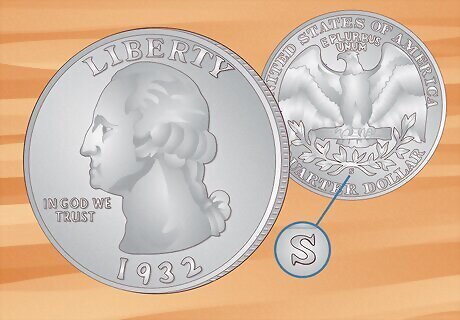
1932-S Washington Quarter This 1932 quarter has the lowest mintage of all the Washington quarters. It was struck in San Francisco, with only around 408,000 coins created. Collectors believe only 40,000 of these coins still exist today. How to identify: Look for an “S” on the reverse side of a 1932 quarter. Price: Up to $6,250 Currently in circulation? Yes.
2004-D Wisconsin 50 States Quarter, Extra Leaf Between 1999 and 2008, the US Mint produced a series of quarters for each state. The 50 State quarters are not typically high-value collectibles, outside of one exception. There were two sets of Wisconsin quarters struck in 2004 in Denver. Some have an error in the corn husk’s design. On some coins, the leaf points downwards; on others, the leaf points upwards. The two varieties are known as “extra leaf, low” and “extra leaf, high.” How to identify: Look for a “D” on the head side of a 2004 Wisconsin quarter, and see if the bottom husk leaf is pointed up or down. Price: Up to $3,200 Currently in circulation? Yes.
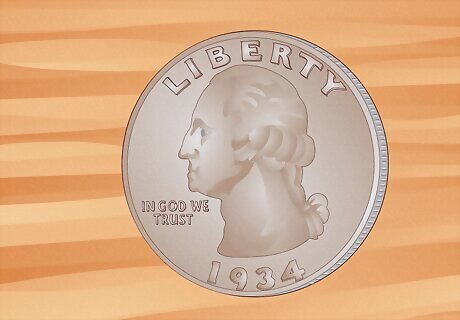
1934 Washington Quarter, Double Die Obverse A double die obverse error occurs when the coin has to be struck more than once and a double image appears. This is most commonly (and famously) seen on the 1934 Washington quarter struck in Philadelphia. On the coin, “IN GOD WE TRUST” and “LIBERTY” have a faint or dramatic doubling. How to identify: Check for a haze or doubling around the words on a 1934 quarter with a “P” on the head side. Price: Up to $10,750 Currently in circulation? Yes.
1943 Washington Quarter, Double Die Obverse This occurrence of the double die obverse error is the rarest. 100 million copies of the 1943 Washington quarter were struck in Philadelphia, with only a few having the double die obverse flaw. How to identify: Check for a haze or doubling around the words on a 1943 quarter with a “P” on the head side. Price: Up to $4,000 Currently in circulation? Yes.
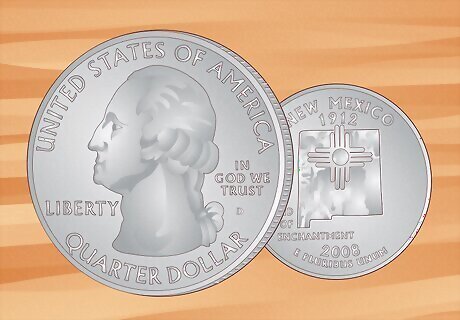
2008-D New Mexico Quarter, Double Die Created in Denver, this 2008 50 States quarter features a doubled die error on the state motto “Crescit Eundo.” This coin is very valuable to collectors because of its mintage error. How to identify: Look for a doubling or mirror effect on the words “Crescit Eundo” on a 2008 New Mexico quarter. Price: Up to $1,500 Currently in circulation? Yes.
2007-D Oklahoma State Quarter, Double Die This 50 States quarter features a double die error on the obverse side of the coin. The error is most visible in “LIBERTY” and “IN GOD WE TRUST.” How to identify: Look for a doubling or mirroring on the words “LIBERTY” and “IN GOD WE TRUST.” Price: Up to $500 Currently in circulation? Yes.
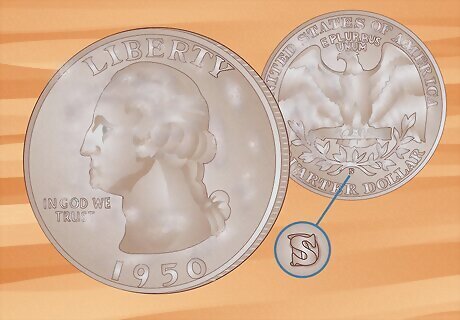
1950-S/D Washington Quarter Rumor has it that these coins were created in two mintage facilities. While it’s never been confirmed, the theory is that Philadelphia received a shipment from the San Francisco facility for more dies. The facility was one die short of the order and overpunched the “D” with an “S.”Dies are the stamps etched with a coin’s design used to press coins. How to identify: Look at a 1950 Washington quarter under a microscope, and see if there’s a faint “D” behind the “S” mint mark. Price: Up to $350 Currently in circulation? Yes.
2005-P Minnesota State Quarter, Extra Tree This 50 States quarter has a double die reverse that creates an extra tree in the design. The original design on the die had 3 trees, but minting produced 4 on some coins. This is the most pronounced and desirable of the double die errors, making it a high-value collectible. How to identify: Look for a fourth tree to the right of the Minnesota state outline in the center of the coin. Price: Up to $275 Currently in circulation? Yes.
What determines the value of quarters?
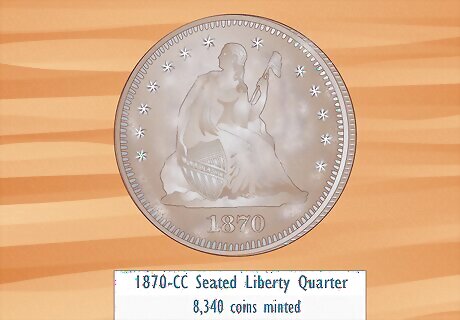
Rarity How rare a quarter is can increase its price tag. In other words, the rarer a quarter is, the more valuable it’ll be. Rare coins typically have low production numbers or have production errors (like double die errors, mintmark errors, and misaligned strikes). Find out how rare and valuable a coin is by searching for the quarter on CoinValueChecker.com or PCGS.com.
Condition The condition or overall quality of a quarter can play a big part in its price. The less damage a quarter has, the more valuable it’ll be. A coin’s condition is known as a grade—the higher the number grade, the more the coin will be worth. Six factors make up a coin’s grade: strike, preservation, luster, color, attractiveness, and minting facility. For example, a 2019-W Washington Quarter is valued at $26 with a 63 grade but $375 for a 67 grade. Mint State (MS) numerical grades go from MS-60 to MS-70. The higher the number, the better the coin’s condition. For more information about the grading scale, check out the Numismatic Guaranty Company’s guide.
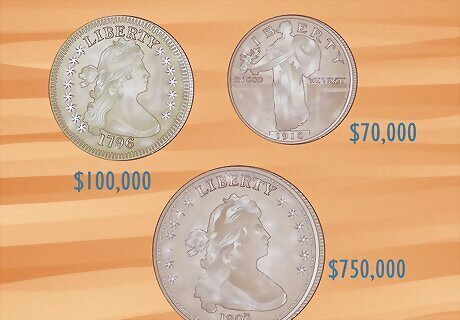
Demand The more popular a quarter is amongst collectors, the more valuable it’ll be. Coins that are more difficult to find, trade, or purchase are more likely to be pricier because they are considered valuable. Market and social trends can also contribute to this. In other words, the more people who want the coin, the higher the price.
How to Start Collecting Coins
Start collecting coins by building a strategy and educating yourself. The best way to start your coin collection is to just start it! The greatest coin collectors are well knowledgeable about coins, their history, and the grading process. Here are some tips for getting into the hobby: Educate yourself. Research coins and their history. Knowing what makes a coin valuable can help you spot rare finds faster. Learn about grading. Coins are graded based on size, material, condition, and history. Knowing the grading scale can help you make better purchases for better prices. Think about your budget. Go into coin collecting knowing how much you’d like to spend. This can help you stay on track financially. Consider how you’ll store your coins. Will you keep them in a binder, on a shelf, or in a drawer? Knowing how you’ll make space for your hobby can help in the long run. Think about what you want to collect. Are you interested in the history of coins, their mintmarks, or their designs? Knowing what you want to collect can help you target your purchases. Know where you’ll get your coins. Think about where you want to shop for your coins: online or in person. Join coin collecting communities. Don’t be afraid to make connections with fellow coin collectors! This way you can learn more about the hobby and get insider tips.
Where can you sell your quarters?
Bring your quarters to a coin dealer. One of the best ways to sell your quarters is to bring them to a coin dealer. Coin dealers are trained in evaluating coins. They’ll be able to determine the overall value of the coin and offer you a price. Keep in mind that coin dealers also have to make a profit. They may offer a deal that’s less than what the coin is worth. Consider taking your coins to a coin dealer before selling them. This way, you’ll know how much to sell them for.
Take your coins to an auction. Coin shows and auctions are for coin dealers and collectors alike! These auctions have a wide variety of sellers and buyers, making them a perfect place to display, trade, and sell your coins. See if there are any coin auctions happening near you by searching “coin shows near me” online.
Sell your quarters online. Sometimes, the best place to sell your coins is online. eBay, Coinfully, and Facebook Marketplace are all great places to list your quarters online and make money. Not only can you reach a larger audience, but you can also work with buyers on the perfect price.
FAQs
How do you know if your quarter is valuable? A quarter is valuable if it’s rare, in good or excellent condition, and/or is desired by many. The value of coins can change over time, but as long as the coin is rare, old, and in good shape, it can be worth quite a bit of money.
Which years of quarters are worth money? Typically, quarters minted before 1970 are worth the most money. These coins are valuable because they have a high silver content and many were minted with errors, making them historically significant. To put things in perspective, the first US quarter was minted in 1796.
Why are 2004 quarters so valuable? 2004 quarters are more valuable because of their rare errors. The most commonly known 2004 quarter worth money is the 2004 Wisconsin state quarter, which has two versions of errors: the husk on the design is either pointed upwards or downwards. This quarter is worth between $30 and $3,000, depending on its condition.
What metal are quarters made from? Back in the day, quarters were made from silver and gold (which is why quarters from 1970 and later are more valuable). Today’s quarters are made from a combination of nickel, copper, and zinc. Think of the quarter like a sandwich: the top and bottom pieces of bread are made of nickel and copper, and the center “meat” is made of copper. You may be able to see the copper peeking out from the inside of the quarter by looking at its edge.
How much money are silver quarters worth? Common silver quarters are usually worth $5 to $10. Silver quarters (or Washington quarters) are the most common and popular type of quarter, and those made between 1930 and 1960 contain at least 90% silver. At the end of the day, the material the quarter is made of doesn’t increase its worth—rarity and historical value do. The rarer and more valuable your silver quarter is, the more it’ll be worth.










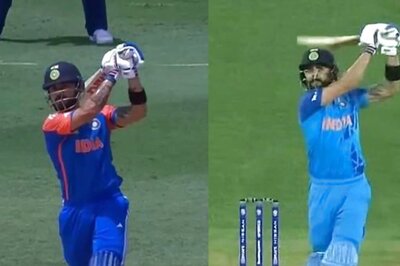

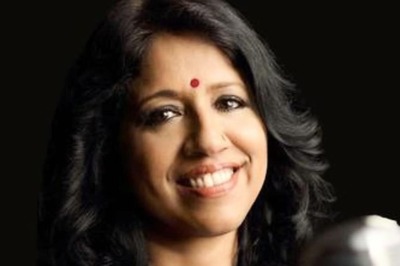

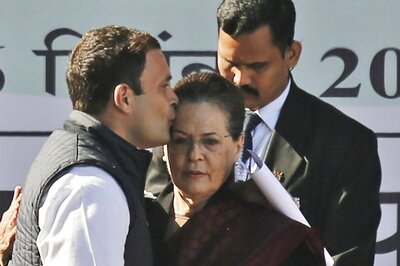


Comments
0 comment